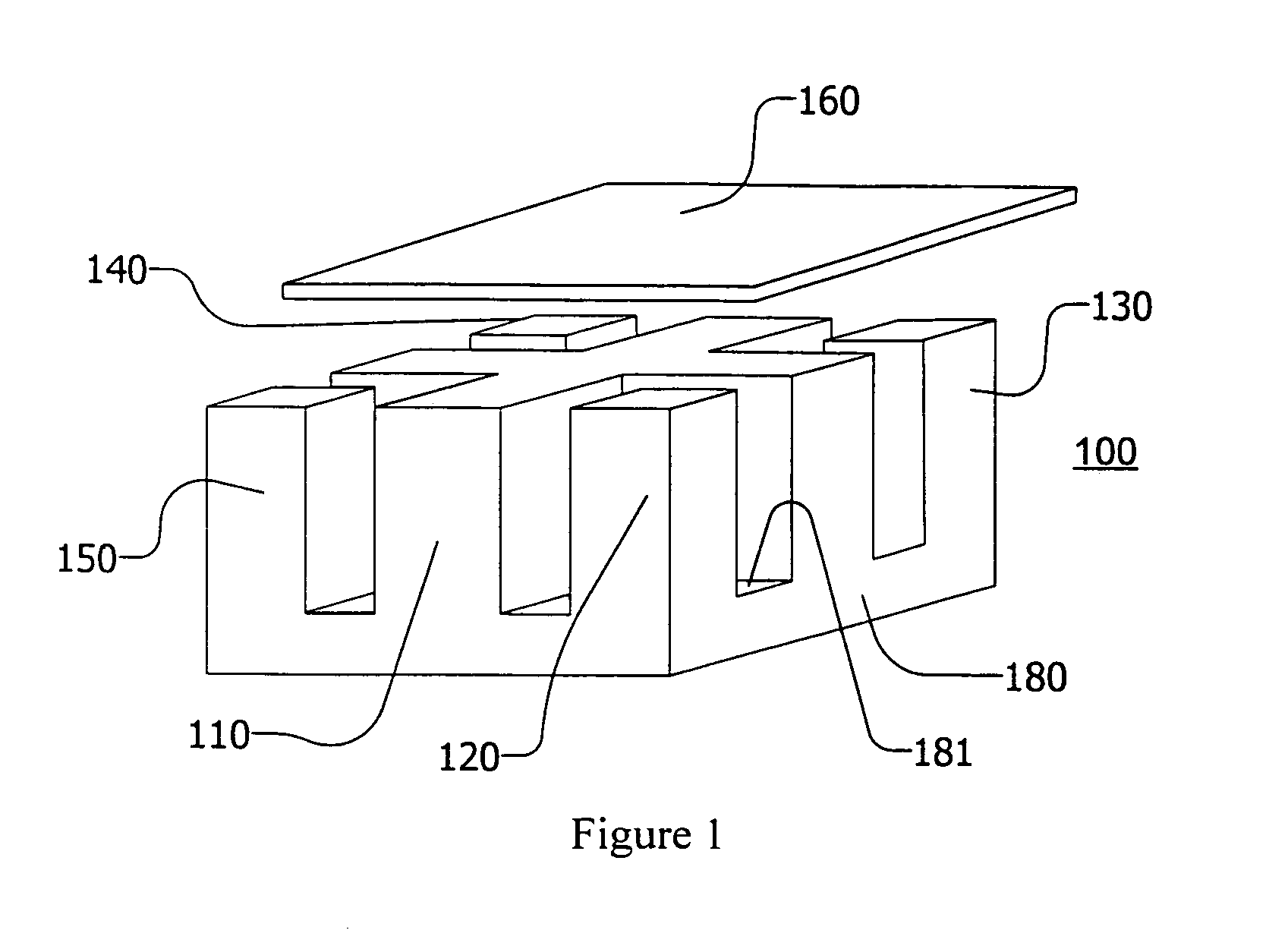Core structure and interleaved DC-DC converter topology
- Summary
- Abstract
- Description
- Claims
- Application Information
AI Technical Summary
Benefits of technology
Problems solved by technology
Method used
Image
Examples
Embodiment Construction
[0037]Throughout this description, the embodiments and examples shown should be considered as exemplars, rather than limitations on the apparatus and methods of the present invention.
[0038]A core in accordance with the invention is useful in power modules and power converters. These power modules and power converters are well suited for low voltage, high current DC-DC converter applications. A core in accordance with the invention may have ultra-low profile magnetics, resulting in better utilization, higher inductance, improved efficiency and lower temperature. In typical E-cores, increased compactness results in decreased efficiency. In contrast, in a core of the invention, increased compactness may result in increased efficiency. Improved efficiency is an unexpected benefit of the invention.
[0039]Principals of the invention are described below with respect to a half-bridge current doubler rectifier application. The invention is, however, applicable to a wide variety of DC-DC conve...
PUM
 Login to View More
Login to View More Abstract
Description
Claims
Application Information
 Login to View More
Login to View More - R&D
- Intellectual Property
- Life Sciences
- Materials
- Tech Scout
- Unparalleled Data Quality
- Higher Quality Content
- 60% Fewer Hallucinations
Browse by: Latest US Patents, China's latest patents, Technical Efficacy Thesaurus, Application Domain, Technology Topic, Popular Technical Reports.
© 2025 PatSnap. All rights reserved.Legal|Privacy policy|Modern Slavery Act Transparency Statement|Sitemap|About US| Contact US: help@patsnap.com



